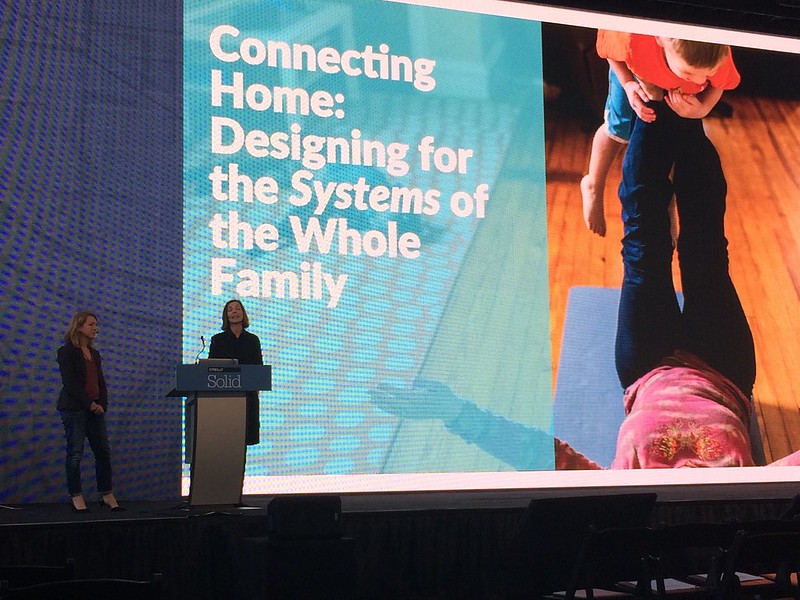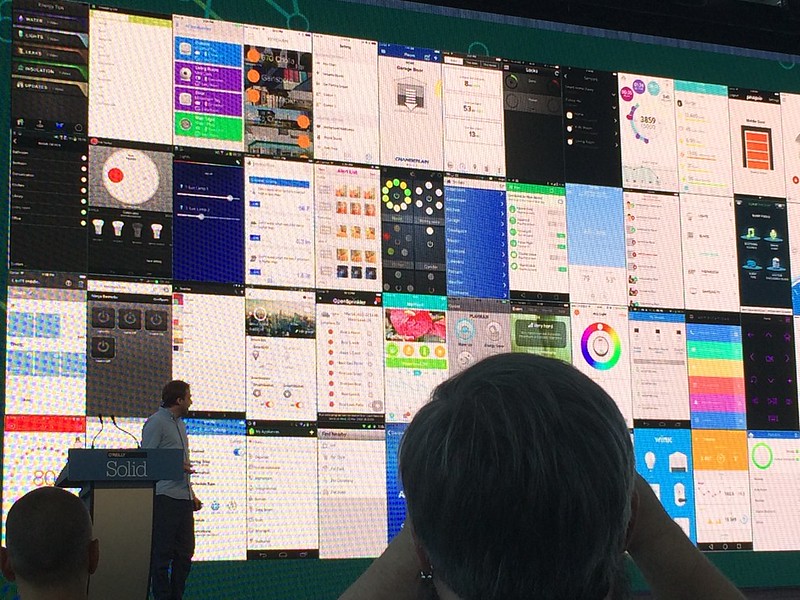Anna Shaw and Murphy Freelen did a presentation at Solid which should not have been eye-opening for me, but was. They pointed out all the various ways that new Internet of Things / home technology products fail to take account of the fact that most homes are occupied by messy things like families, guests, friends and flatmates and are less frequently occupied by Single (white, straight, young, able etc) Men with high disposable income and lots of bandwidth.
This is, of course, not a new technology phenomenon and is normally addressed by everyone else just trying to live with whatever the Single Men come up with.
I shouldn't have been surprised by this because I deal with it all the time. I'm in a family lucky enough to have an xbox, Apple TV, iTunes, Spotify and a Nest and I'm fully aware that making them work for more than one individual is pretty hard - and I'm the one individual. And they've been working on this stuff for years. And it's still mainly on screens you're supposed to be in the room with.
Designing for the complex and shifting power and permission relationships inside the average family is going to be a massive issue. Think how hard it is to explain to a visitor how to control your slightly-smart TV and your Sky box, think about all the notes you leave around the place pointing at remote controls and wifi passwords and multiply that by your lighting, your washing machine and your microwave. Add in a few different apps for your different systems and a couple of operating systems and then don't forget the fact that the device that actually controls all this stuff may well be in your bag, not in the home where your guests or relatives are.
(Valentin Heun, illustrates the app mess neatly above)
Tom and Matt of Thington both did presentations that showed they're poking intelligently at this problem. How do you deal with networked devices that aren't always connected to the network? How do you deal with small groups, with constantly shifting power relationships, in lots of different locations, some of whom are controlling a light switch while standing right next to it, some of whom are attempting to control it from across the world? You can tell they've got some clever answers behind a stealthy curtain.
And, as Anna and Murphy made clear, this cannot just be about managing multiple identically conceived but differently permissioned users, that's how productivity software got designed and that's been bad enough in the workplace, porting those approaches to the home aren't going to work. We can't just move from software for a young, rich man to software for young rich men.
Tim O'Reilly opened Solid in 2014 with a talk entitled Software Above the Level of a Single Device. He took that title from a parting letter to Microsoft by an open source advocate called Dave Stutz. He frequently quotes the ending of that letter:
"Useful software written above the level of the single device will command high margins for a long time to come."
That still seems true. But, as software really moves into the world, really needs to be built for people other than the people who mostly build it, I'd also argue that -
Useful software written above the level of the single man will command high margins for a long time to come.

